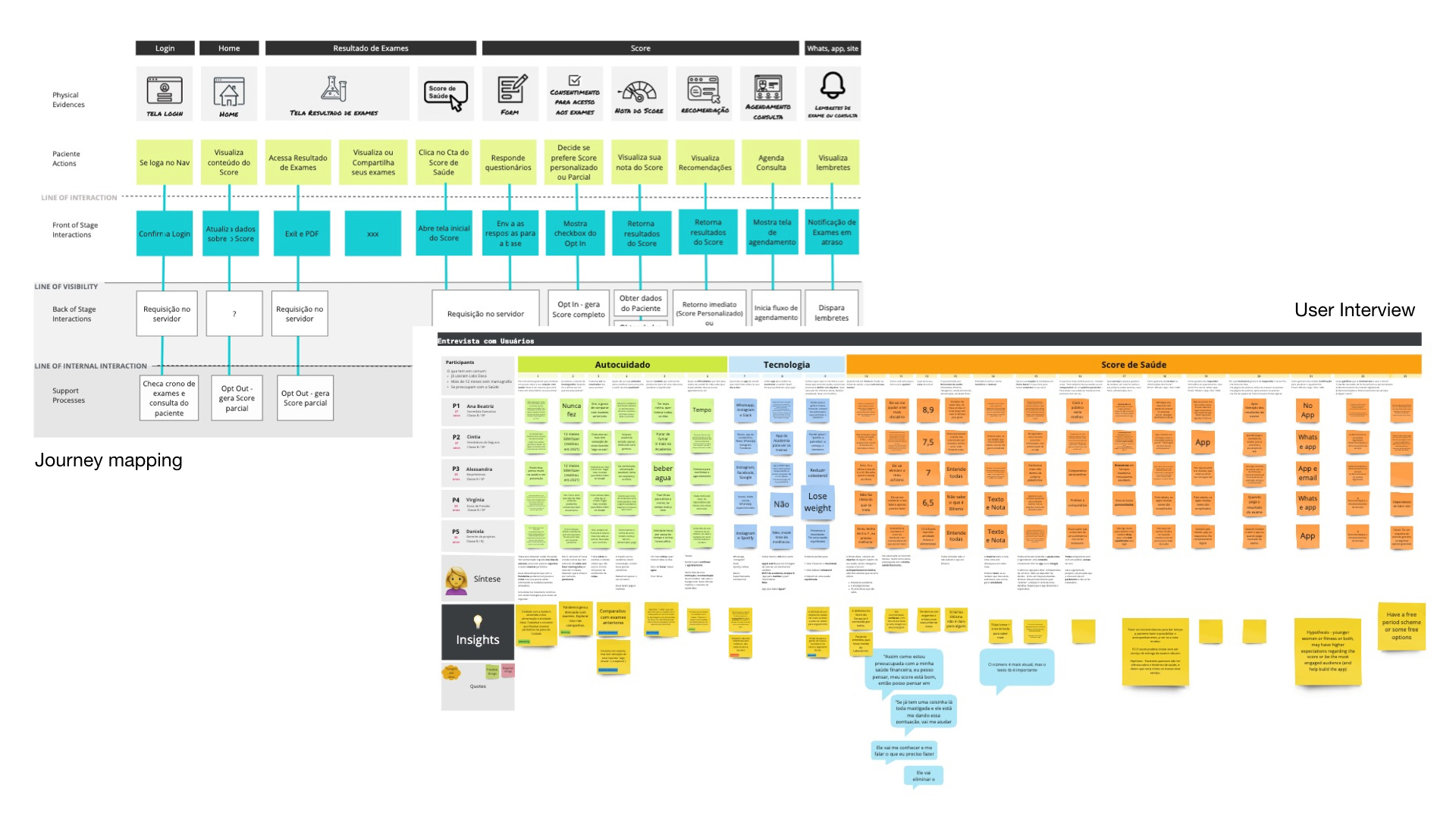AI-Driven Health Scoring: A approach to personalized self-care
Case DASASegment Healthcare
App & Website
Product Impact
- Increased engagement rates
More intuitive design and personalized health information, especially for patients with chronic diseases. - Increased recurring patient rates
Driven by consistent follow-up reminders and personalized care recommendations. - Higher conversion rates
Interest in understanding and monitoring health (score) led to an increase in appointment and exam bookings. - Transparency
Easy access to health data and clear information. "Transparency" was defined as one of the heuristics to evaluate the quality of the experience.
Challenges/Solutions
- Low budget
1) Existing databases and analytics provided valuable insights into user behaviors and preferences 2) Focused on one user segment: chronic patients, as they had more exams and appointments, providing more precise and targeted feedback. - Sensitive topic
Health, by its intimate and personal nature, requires a sensitive and respectful approach. Empathy was crucial to ensure participants felt comfortable sharing their challenges. - Cognitive biases
An open-minded mindset was essential to ensure an unbiased analysis of patients, allowing all perspectives to be fairly considered without prejudice.
Context
The project involved creating the Health Score product, aimed at promoting self-awareness and self-care. Exam data combined with information about personal habits, such as physical activity, diet, and alcohol consumption, would be processed by artificial intelligence to generate a score from 0 to 10, reflecting the user's overall well-being. Based on this "score", recommendations such as consultations, exams, or lifestyle adjustments would be offered. The project was collaborative and multidisciplinary, involving doctors, data scientists, product managers, designers, and developers.
Strategy & Methodology
#Analytics & Insights
I used mixed research methods to answer different questions and gain a comprehensive view of users' perspectives and pain points. As the product did not yet exist, I started with exploratory research, both qualitative — I conducted user interviews to understand how people manage their health, their daily environment, and related tasks. Questions like "How do you remember to take your exams?" helped generate initial ideas and hypotheses, as well as quantitative — I consulted existing databases and conducted quick online surveys using the Hotjar tool.
#Value Proposition
To assess the potential utility of the "Health Score", the first screens were designed for concept testing.
#teamtogether
With valuable insights, we moved on to the journey mapping, where I chose the Design Thinking Blueprint method. This allowed us to understand the customer experience, identify possible interactions, and map the layers involved in the process.
#Feedback & Continuous Improvement
From the first interactions with users, conducted through exploratory interviews, to the collaborative work with the data science team to build the algorithm that generated the 'Health Score', we were able to trace a complete design and development journey.




 Back
Back
